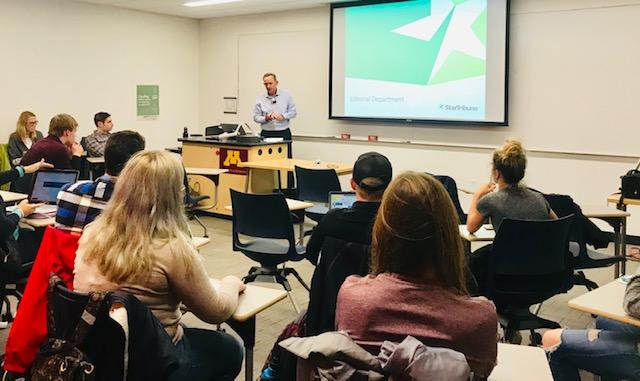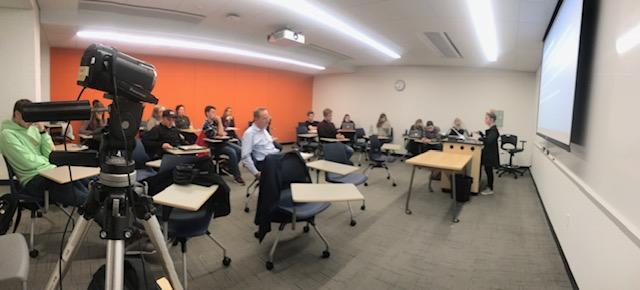
Recently we got a little help from Scott Gillespie, the editor of the Opinion pages for the Minneapolis Star-Tribune. He took a break to come talk to us during one of the busiest times of the year for the Editorial Board as the newspaper is in the middle of interviewing all of the candidates running for office. Soon the Editorial Board will need to make their endorsements for the 2018 primaries. Some of the tidbits we learned from Scott are:
- Opinion pages: He discussed how a member of the Editorial Board might not agree with what they print, but the discourse differing opinions create can be eye opening and create a dialogue (sounds like what we are trying to do in SciCourt!).
- Balance: The editorial pages try to show a variety of opinions.
- Bias: Recognizing that opinions are, by nature, bias. Try to offer a range of opinions or a “range of bias.”
- Sources: The editors at the Star-Tribune generally require two good sources before they publish the information unless it is a “golden source” (i.e. someone they already know and trust). But be very careful, he says, because it’s very difficult to defend yourself against an anonymous source.

You might be wondering what all this has to do with SciCourt? The answer is simple. All of the things Gillespie talked about can be related back to SciCourt and what we are trying to accomplish. For example:
- Opinions: The reason a SciCourt case will be tried in a public trial setting is to ensure differences in opinion for the purpose of creating what we hope is an eye-opening discourse in the trial as well as in the public.
- Balance: SciCourt also attempts to avoid a traditional legal strategizing by limiting the amount of evidence either side can veto during the pretrial evidence hearing.
- Bias: By separating the Legal Team from the Science Team and compiling a large body of evidence, we hope to avoid bias as much as possible and have a wide variety of opinions.
- Sources: Sources are a huge part of SciCourt and Gillespie’s insight provides yet another standard to ensure we obtain the most accurate information possible.

After Gillespie shared his knowledge with us, it was our turn to do the explaining. The members of the Legal Team presented the case and an overview of the SciCourt case we selected about 1:1 technology in schools. This presentation was a test run to see how someone not involved in the case or the class would receive our ideas. The results were better than we could have hoped for! Not only was Gillespie really curious to hear how our case would go, but he also agreed that SciCourt itself could grow into something much bigger-- a process for discussing difficult topics in polarized times, anchored by science and facts.